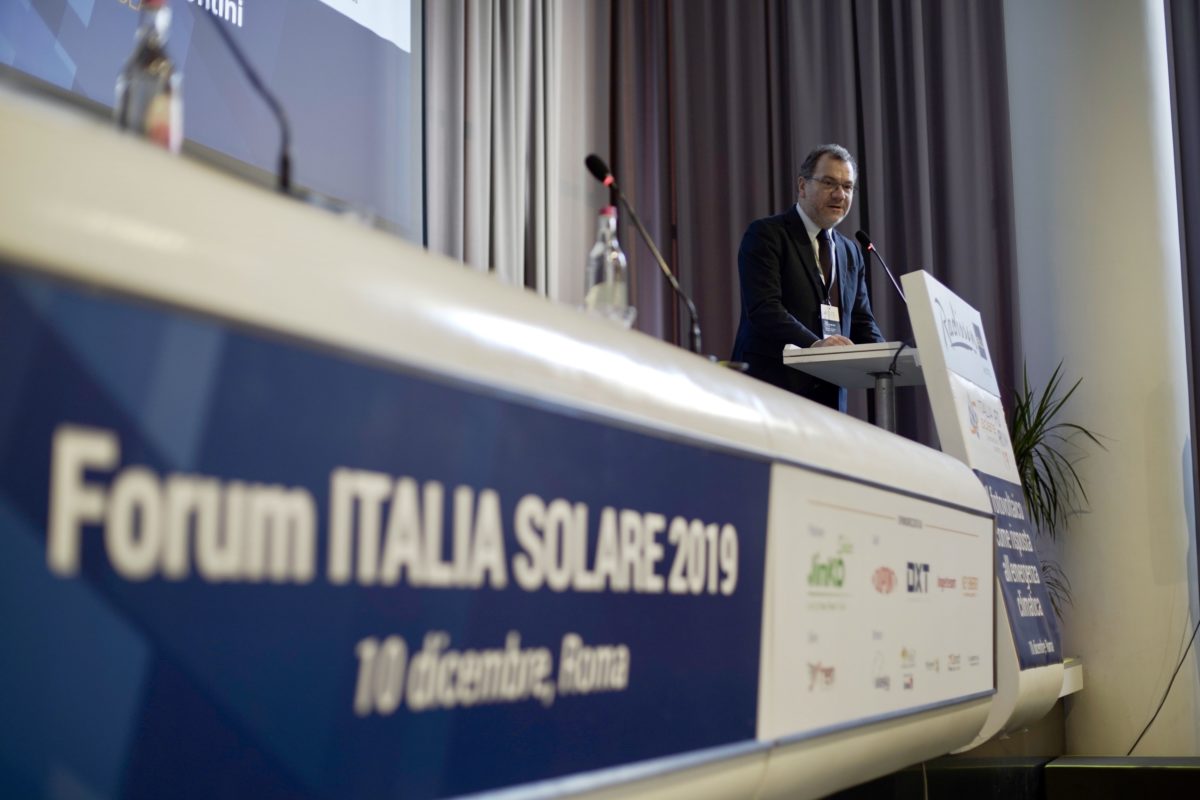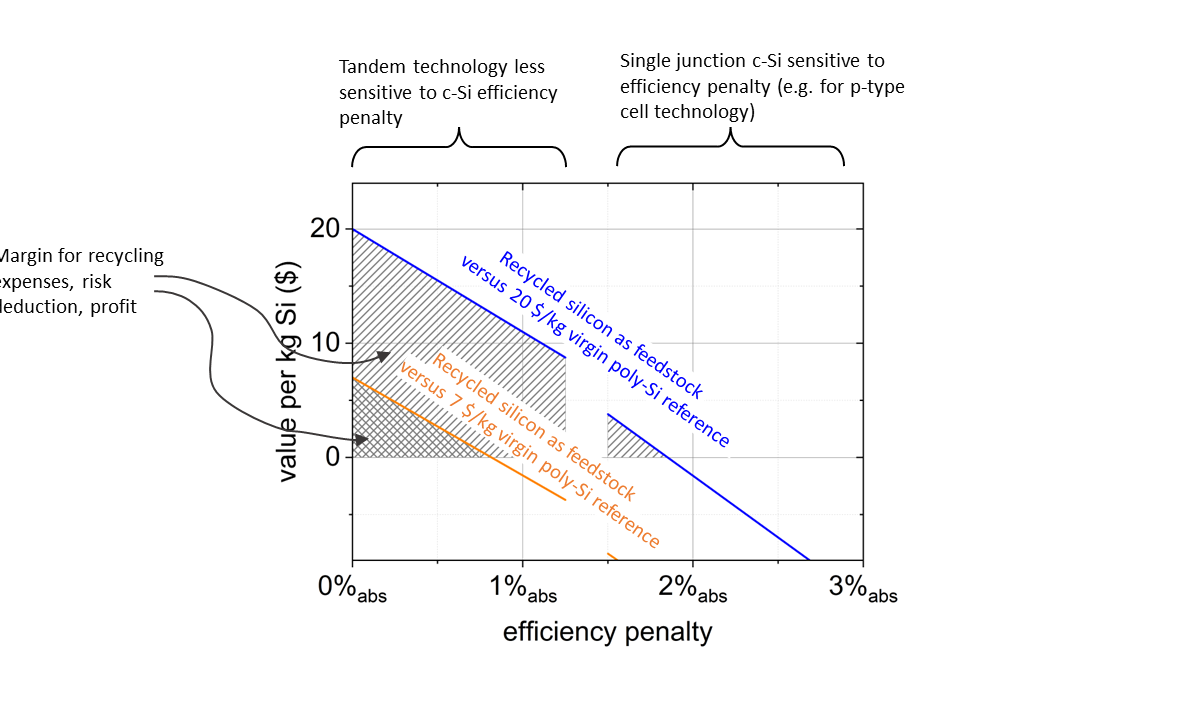The latest Forum Italia Solare event showed evidence the Italian market has begun to grow from the 300-400 MW of new solar installs seen in the last three or four years. However the hoped-for rebound is slower than expected and shows no sign of returning the country to the status of a gigawatt market any time soon.
Last week’s conference in Rome highlighted how securing permits for large scale solar projects remains the biggest obstacle to the industry.
Emilio Sani, founder of law firm Sani Zangrando Avvocati and board member of Italia Solare, said national rules do not provide sufficient criteria to identify the areas eligible for PV project development. As a result, said Sani, the permitting process required to construct a 5 MW-capacity solar project on an industrial site is the same as that followed for a 150 MW facility on agricultural land. Compounding the problem, said the lawyer, is the fact many regions block PV on farmland despite Italian law specifying solar projects can be installed in such locations.
Industry body Italia Solare has urged the government to remind regional authorities agricultural land is permissible and to select PV project development sites which are either near industry or where development could support agriculture.
Time-consuming
If the government fails to take action, Italian large scale PV could be fatally handicapped “due to the long time necessary to get an answer, and to the resources lost in the development of plants in unfit areas”, Sani told pv magazine, adding: “The numbers give evidence of this. The growth of the installations in these last years has been materially limited by the absence of authorizations.”
Developers must devote time to in-depth study of the environmental, landscape and energy strategies of regional and provincial authorities, said the lawyer. Referring to the new Provvedimento Autorizzatorio Unico Regionale – PAUR – which granted powers to regional authorities, Sani said “the procedure could be concluded in one year if the projects are filed with all the necessary annexes and documents. The key point is, however, to have clear strategic indications on the nature of the areas where [it] will be possible to install the PV plants.”
Planning and developing a utility scale solar park in Italy can take one to three years at the moment, according to Italia Solare.
The situation is not helped by the stance taken by government bodies such as the department responsible for the nation’s environment and historic buildings, the Soprintendenza per i Beni Culturali e Ambientali, which often opposes solar development on landscape grounds.
A national steer
“The national rules should set forth criteria [under] which the landscape authorities must comply,” Sani said. “Also it would be key to make correct application of the existing regulation that excludes the need of landscape authorizations for most of the roof-mounted installations and that grants to the environmental department of [a] region, in the PAUR procedure, to weigh the possible objections of the landscape authority and to ignore them if they are not justified.”
Italia Solare president Paolo Rocco Viscontini echoed that sentiment. “Thanks to the PAUR, the current regulatory framework could be considered adequate if it were correctly applied,” he told pv magazine. “The 245 days provided for the authorization proceeding for large plants can be considered an adequate time.”
Viscontini said medium-voltage projects planned near urban or industrial areas, and near farms, should be fast-tracked. “We hope that new rules will be defined,” he said. “For larger, high-voltage projects, Italia Solare believes the PAUR proceeding should be applied in a homogeneus way by all regional governments. At the moment there is an extremely diversified situation, region by region – as illustrated by Mauro Moroni, the CEO of law firm Moroni & Partners in his speech at the forum – and it is clear that simplification is needed. In this perspective, Italia Solare will be active at the State-Regions Conference at the beginning of next year to ask for more co-ordination and greater uniformity among the regions.”
A gigawatt market in 2020?
Despite the permitting obstacles, Viscontini said he believed Italy could again be a gigawatt market next year, with 1-1.5 GW of newly deployed capacity. That would come from a combination of rooftops, the initial projects from the country’s first capacity auction – which is due to be finalized by the end of January – and several unsubsidized projects linked to the private power purchase agreement (PPA) market, said the trade body president.
While the Italia Solare conference was being staged, British energy investor Octopus Investments announced it had connected 70 MW of unsubsidized solar plant generation capacity in Assemini, near Cagliari on Sardinia. The projects are part of Octopus’s 173 MW Italian solar portfolio, of which 66 MW is already operational in Montalto di Castro, in central Italy. The 70 MW of Sardinian projects, along with a 10 MW private PPA-linked facility on Sicily, are Italy’s first operational, unsubsidized PV plants.
“In 2021 we hope to exceed 2 GW, although we must be aware that these numbers are completely inadequate with respect to the objective set by Italy’s energy strategy, the PNIEC, which we know is neither correct nor adequate,” Viscontini said. In fact, according to Viscontini, even the 30 GW of additional PV required by the national strategy are not enough. He believes 50 GW should be realized by 2030.
Energy ambition
The Proposta di Piano Nazionale Integrato per l’Energia e il Clima envisages an expansion of installed solar capacity from the current 20 GW or so to at least 50 GW by 2030, requiring around 3 GW of new solar to be added annually. Italia Solare has estimated 5 GW of new solar capacity would be required each year to hit national decarbonization targets.
The Italia Solare forum also heard evidence of healthy interest in energy communities and rooftop solar as well as energy storage, from household to utility level. Industry insiders also said more demand-response measures and reform of the electricity dispatch market would be pivotal for Italy’s future energy system.
This content is protected by copyright and may not be reused. If you want to cooperate with us and would like to reuse some of our content, please contact: editors@pv-magazine.com.




By submitting this form you agree to pv magazine using your data for the purposes of publishing your comment.
Your personal data will only be disclosed or otherwise transmitted to third parties for the purposes of spam filtering or if this is necessary for technical maintenance of the website. Any other transfer to third parties will not take place unless this is justified on the basis of applicable data protection regulations or if pv magazine is legally obliged to do so.
You may revoke this consent at any time with effect for the future, in which case your personal data will be deleted immediately. Otherwise, your data will be deleted if pv magazine has processed your request or the purpose of data storage is fulfilled.
Further information on data privacy can be found in our Data Protection Policy.